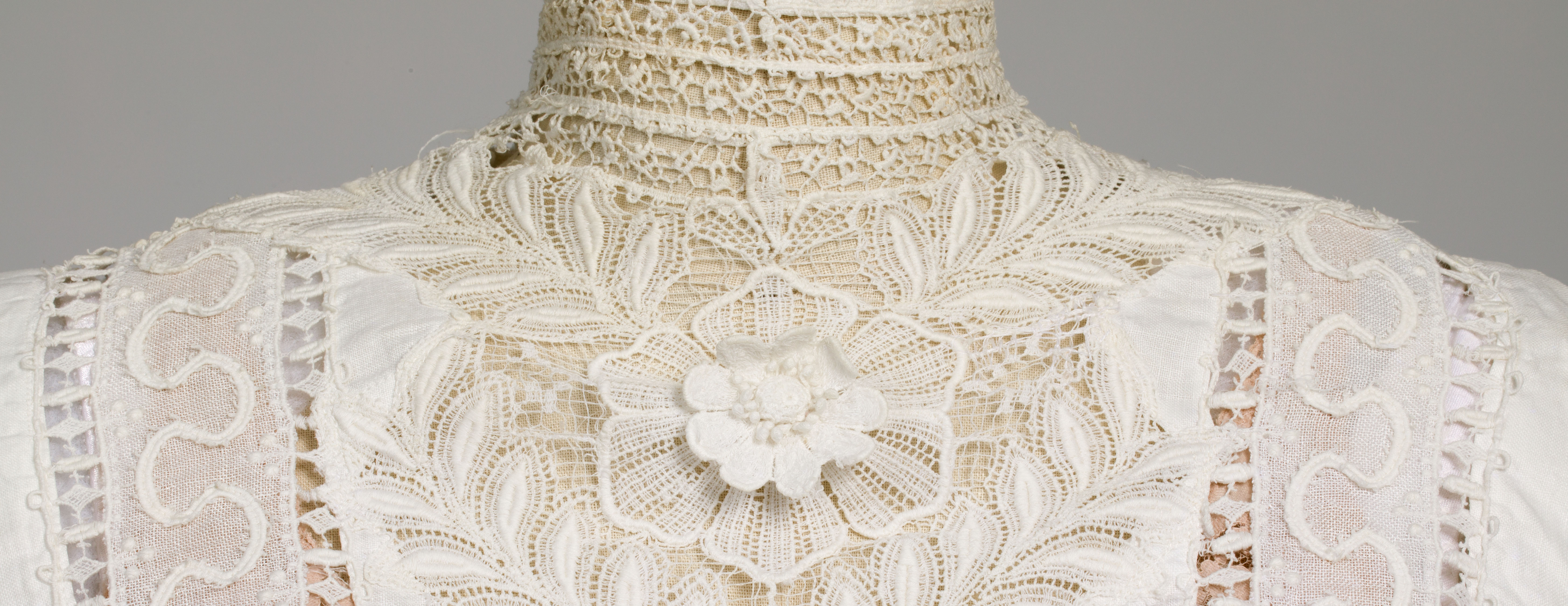Day Dresses
The term "Day Dress" refers to a style of dress as varied as the activities performed throughout the day. This exhibition presents four types of day dresses: a wrapper appropriate for receiving guests at home at the end of the 19th century, the uniform of a young woman in the early 1910s, a white 1920s tea-length dress appropriate for croquet on a warm summer day, and light weight, yet functional house dresses for the mid-century homemaker. Each dress illustrates part of the freedom provided through shorter skirts and the decline of restrictive corseting. While these garments may seem formal in today's world of causal athleisure wear, each piece was revolutionary in its time, providing both function and form.
The day dresses in this exhibition explore how the freedom of movement in strong, durable, breathable clothes made (mostly) of linen, yet still soft in their feminine silhouettes, was just one part of the progression toward our casual clothing of today. As a Radcliffe professor noted in a 1922 article in the San Francisco Call and Post, “Once a woman has known the joys and comfort of unrestricted movement, she will be very loath to go back to trailing cumbersome skirts.”
-Charlene Gross
References
Clemente, Deirdre. 2014. Dress Casual : How College Students Redefined American Style. Chapel Hill, NC: The University of North Carolina Press.
———. 2015. “Why and When Did Americans Begin to Dress so Casually?” Time. August 5, 2015. https://time.com/3984690/american-casual-dressing/.
